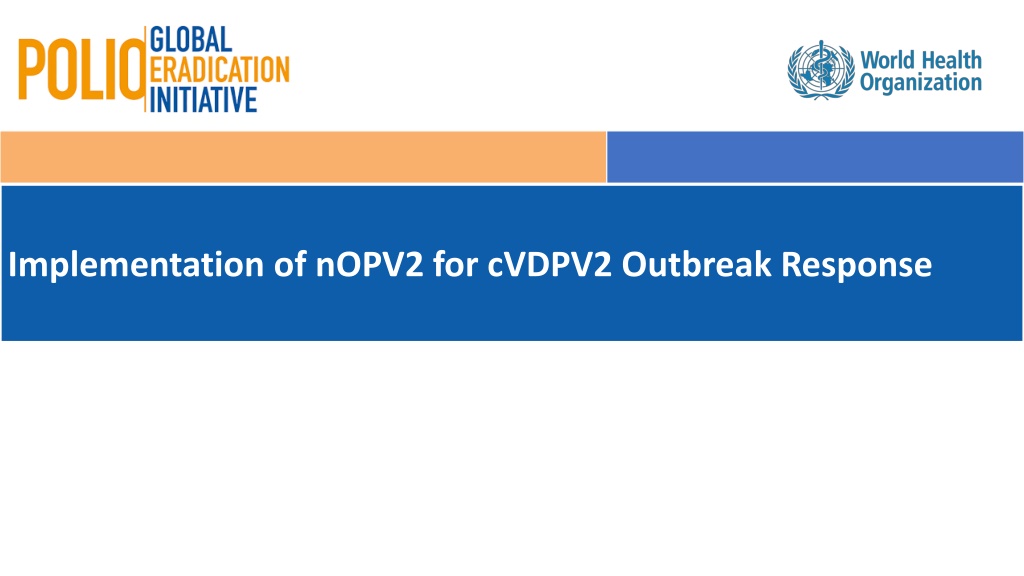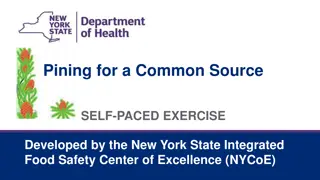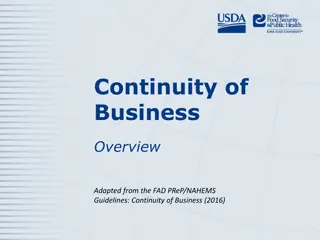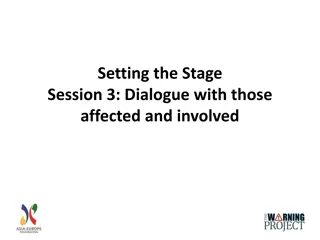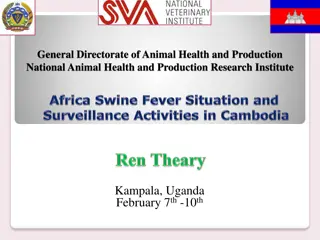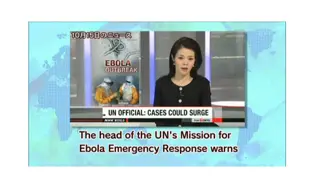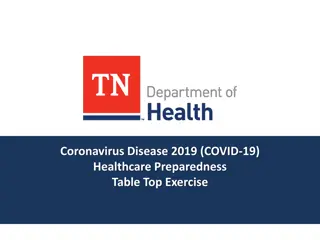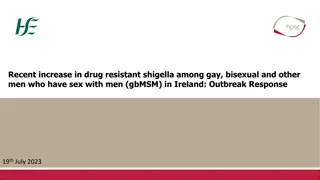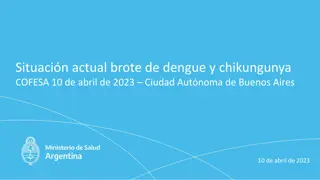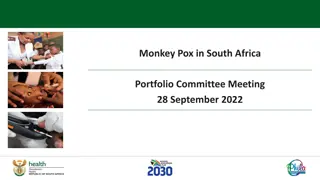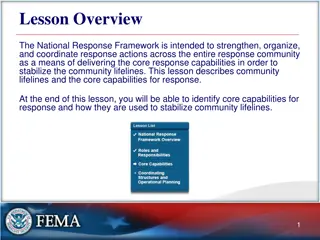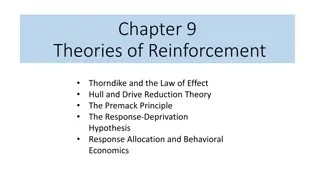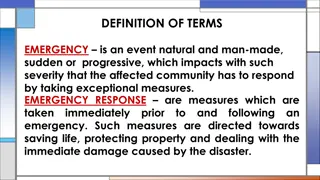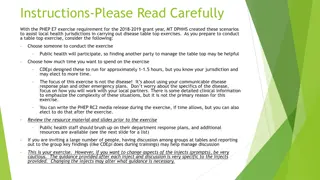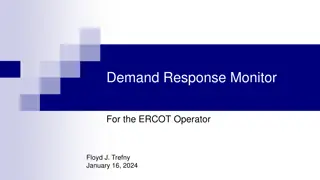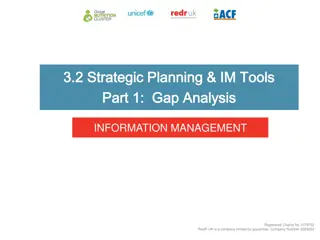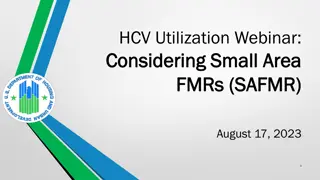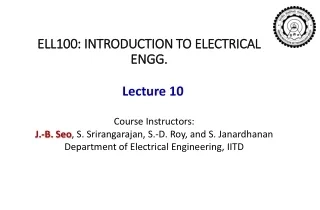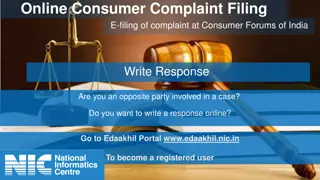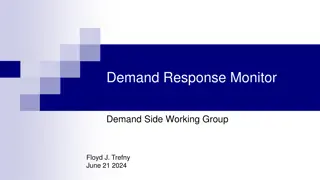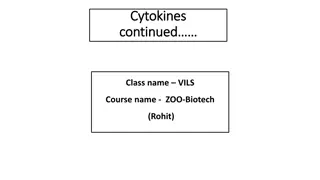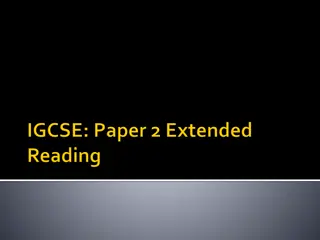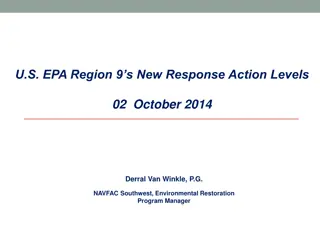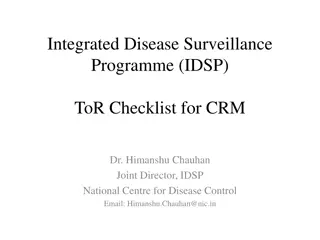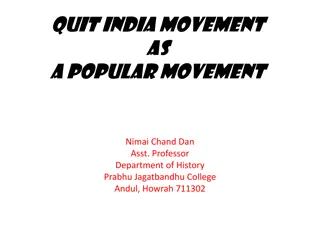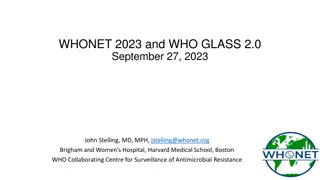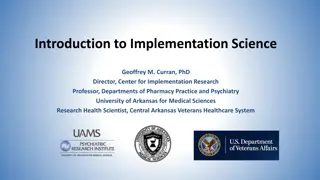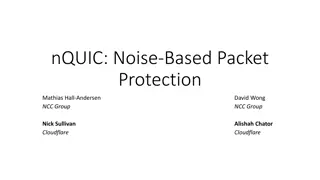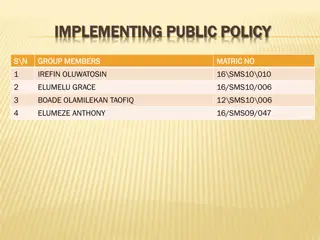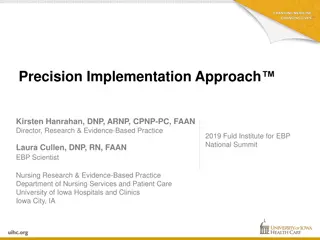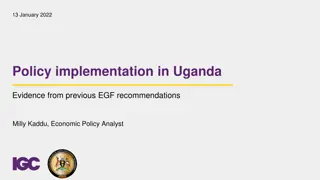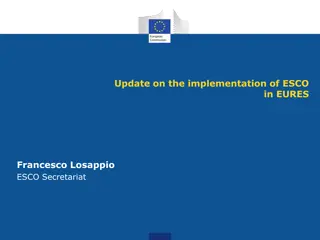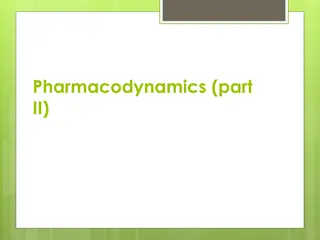Implementation of nOPV2 for cVDPV2 Outbreak Response
Circulating Vaccine-Derived Poliovirus (cVDPV) outbreaks, particularly cVDPV type 2 (cVDPV2), have increased in recent years. The novel oral polio vaccine type 2 (nOPV2) is an innovative tool developed over nearly 10 years to combat these outbreaks. Clinical trials have shown that nOPV2 provides comparable protection against type 2 poliovirus while being more genetically stable, reducing the risk of paralysis in under-immunized communities. Its indicated use is for cVDPV2 outbreak response only, with guidance provided through updated GPEI Standard Operating Procedures.
Download Presentation

Please find below an Image/Link to download the presentation.
The content on the website is provided AS IS for your information and personal use only. It may not be sold, licensed, or shared on other websites without obtaining consent from the author. Download presentation by click this link. If you encounter any issues during the download, it is possible that the publisher has removed the file from their server.
E N D
Presentation Transcript
Contents nOPV2: An Innovative Tool for Outbreak Response 3 Plans for nOPV2 Rollout 8 Process for Country Readiness and Implementation 13 Annex: Additional Slides for Technical Audiences Key Resources on nOPV2 17 19 2
nOPV2: An Innovative Tool for cVDPV2 Outbreak Response 3
The Need for nOPV2: Circulating Vaccine-Derived Poliovirus (cVDPV) Circulating vaccine-derived polioviruses (cVDPVs) occur when the weakened strain of the poliovirus contained in the oral polio vaccine (OPV) circulates among children in under-immunized communities for a long time, and genetically reverts to a form that causes paralysis The frequency and scope of cVDPV outbreaks, particularly cVDPV type 2 (cVDPV2), have increased in recent years. Spread of cVDPV2 cases, 2019 4 Global Spread of cVDPV2 cases, 1 Jan 25 November 2020
The need for nOPV2: A New Tool for cVDPV2 Outbreak Response nOPV2 Genome with modifications The novel oral polio vaccine type 2 (nOPV2) is a next-generation version of the existing cVDPV2 outbreak response vaccine, mOPV2 nOPV2 has been in development for nearly 10 years Clinical trials have shown that nOPV2 provides comparable protection against type 2 poliovirus while being more genetically stable and therefore less likely to revert to a form that can cause paralysis in under-immunized communities. This means that nOPV2 could help stop the spread of cVDPV2 outbreaks. Relevant publication on the nOPV2 Modifications and Source of this photo: Ming TY, Bujaki E, Dolan PT, Smith M, Wahid R, Konz J et al. Engineering the Live-Attenuated Polio Vaccine to Prevent Reversion to Virulence. Cell Host and Microbe 2020; 27(5):736-751.E8 5
Details on the Vaccine and its Indicated Use Indicated Use: Under the Emergency Use Listing, nOPV2 is authorized for cVDPV2 outbreak response only (like mOPV2). Guidance for deployment will be provided through updated GPEI Standard Operating Procedures Presentation: 50-dose vials; liquid will be similar in colour to mOPV2. Like mOPV2, nOPV2 vials will feature a vaccine vial monitor (VVM) Administration and Dosage: two drops, delivered orally Target Population: Will usually be children under 5 (as with current outbreak response campaigns); however, an expanded age group may be considered if there is evidence of virus circulation among older age groups 6 6
Policy Guidance and Statements In Support of nOPV2 WHO Executive Board In February 2020, the WHO Executive Board issued a formal decision urging Member States to expedite processes for authorizing the importation and use of nOPV2 on the basis of its Emergency Use Listing (EUL). (See: WHO Executive Board Agenda Item 146.11, 7 February 2020) WHO Strategic Advisory Group of Experts on Immunization (SAGE) At their October 2019 meeting, the WHO SAGE endorsed the accelerated clinical development of nOPV2 and its assessment under the EUL procedure. (See: WHO Weekly Epidemiological Record 9447) At their April 2020 meeting, the WHO SAGE endorsed the framework for the initial use of nOPV2 under the Emergency Use Listing. (See: WHO Weekly Epidemiological Record 9522) At their October 2020 meeting, the WHO SAGE endorsed that nOPV2 should become the vaccine of choice for cVDPV2 outbreak response following a successful initial use period. (See: WHO Weekly Epidemiological Record 9548) 26th Polio IHR Emergency Committee In October 2020, the IHR Emergency Committee urged countries to consider preparing for nOPV2 use under EUL to help stop the spread of cVDPV2 (See: IHR Committee Statement, October 2020) At the resumed 73rd World Health Assembly (WHA) in November 2020, Member States throughout the African Region, as well as Argentina, Luxembourg, Malaysia, and Pakistan, expressed their commitment to responding rapidly to poliovirus outbreaks and welcomed nOPV2 as an important tool WHO Member States 7
Global Rollout: Making nOPV2 Available through the WHO Emergency Use Listing (EUL) WHAT IS THE EUL? The EUL (Emergency Use Listing) is a special rigorous and independent regulatory pathway that is available for use in Public Health Emergencies of International Concern (PHEIC) such as polio. It ensures that vaccines and other medical products can be made available as soon as possible in emergency public health situations like cVDPV2 outbreaks. WHY IS nOPV2 BEING MADE AVAILABLE THROUGH AN EUL? A streamlined regulatory process supported by WHO and rapid field availability to help stop the spread of cVDPV2 and prevent paralysis in children Confidence in nOPV2 s safety and effectiveness based on clinical development and trial data Similarities to mOPV2, a vaccine with which the GPEI has decades of experience The official WHO PQ assessment of nOPV2 (pictured here) is available at: https://extranet.who.int/pqweb/sites/default/files/documents/nOPV2_EUL_recommendation.pdf 9
The First Uses of nOPV2: The Initial Use Period The initial use period refers to the period of time spanning the first uses of nOPV2 in outbreak response, when additional criteria for monitoring the vaccine s safety and effectiveness are in place. What is the Initial Use Period? Given that cVDPV2 outbreaks disproportionately affect areas where access to healthcare is difficult, enhanced monitoring is essential to detect any unanticipated events and respond to them quickly and effectively. Why is an Initial Use Period Needed? Now that the WHO PQ team has issued the EUL recommendation for the use of nOPV2, the initial use period can begin as soon as the first country is ready to use nOPV2. The current estimate for the beginning of the Initial Use Period is January 2021. When will the Initial Use Period begin? The initial use period is expected to last until sufficient data can be collected and analyzed to confirm the vaccine s performance and safety. The duration of the initial use period depends on the number of doses administered but is expected to last for at least 14-15 weeks after first use. This why any country interested in using nOPV2 within the next 3-6 months should begin preparing for nOPV2 use now and should anticipate needing to meet the initial use criteria. For how long will the Initial Use Period last? 10
The Initial Use Criteria for nOPV2 Endorsed by the Strategic Advisory Group of Experts on Immunization (SAGE) Capacity for post-deployment surveillance (including safety, AFP and ES) Waiting period of 12 weeks after last mOPV2 use in area VDPV2 detection Capacity to acquire/distribute vaccine in a timely manner Capacity to respond to unanticipated findings Additional Considerations for nOPV2 Use in Outbreak Response A waiting period of 6 weeks after bOPV outbreak response campaigns (to minimize risk of recombination between nOPV2 and mOPV1/3) Vaccine acceptance Access or security issues Specifics on Initial Use First uses under EUL: outbreak response with nOPV2 alone Ensure sufficient vaccine to conduct full required number of rounds with nOPV2 11
Full Timeline and Process for nOPV2 Rollout nOPV2 receives WHO Prequalification (End of EUL Recommendation and Listing Period) To be determined, but not before 2023. Some necessary activities (e.g. studies) have been delayed due to COVID-19 Continued use of nOPV2 under the EUL Recommendation for Use Initial Use Period following the EUL Recommendation for Use The first outbreak responses with nOPV2 under an EUL recommendation for use Following the conclusion of the Initial Use Period and review of the data generated, SAGE will be asked to endorse wider use of nOPV2 under the EUL recommendation through 2022 Timing Essential Criteria for Initial Use Safety and surveillance monitoring requirements following vaccine deployment (sometimes called post- deployment monitoring, or PDM requirements), which are required for use of the vaccine under EUL (note that these may evolve over time, based on data and learnings) Safety and surveillance monitoring requirements following vaccine deployment (sometimes called post- deployment monitoring, or PDM requirements), which are required for use of the vaccine under EUL (note that these may evolve over time, based on data and learnings) Standard conditions for vaccine use, informed by lessons learned from the implementation of nOPV2 under the EUL recommendation for use Applicable Criteria 12
Process for Country Readiness and Implementation 13
Which countries are preparing for nOPV2 use? All countries identified as being at high risk of VDPV2 detection should begin preparing for nOPV2 use now, in order to be able to conduct a response with nOPV2 while it is under the EUL Which countries are classified as high risk? Countries with current VDPV2 detections in AFP or ES surveillance Countries that have had a cVDPV2 detection in the past 6-12 months Countries that border countries that meet the above criteria Other countries in regions where cVDPV2 has been detected that do not meet these criteria but would like to be prepared for a possible VDPV2 detection and subsequent response with nOPV2 may also wish to start preparations High-risk countries have been identified within each region and WHO/UNICEF Regional Offices are currently working with these countries to prepare for nOPV2 use 14
How are countries preparing for nOPV2 use? The GPEI has created a readiness process and readiness tools in order to help countries meet all criteria and prepare for nOPV2 implementation under the EUL. Each country will need to complete the requirements described in the GPEI nOPV2 readiness checklist Countries will be supported in their readiness preparations by national nOPV2 focal points, regional nOPV2 focal points, WHO/UNICEF Regional Offices, and other regional- and global-level subject matter experts A documented recommendation from the NITAG/national immunization advisory group and the national regulatory authority is required for nOPV2 use in country The Readiness Checklist and other tools can be found on the nOPV2 web page. The Technical Guidance Document which outlines the requirements is also located here: http://polioeradication.org/nOPV2 15
How are countries preparing for nOPV2 use? (continued) Communications Preparation The items in Category G of the Readiness Checklist (Advocacy, Communications and Social Mobilization): Communications messaging, tools and training will be crucial for increasing awareness and acceptance of nOPV2. The GPEI is working with countries to develop and implement communications strategies to harness the role of in- country immunization champions and mitigate against potential misinformation and rumours. 16
Key Resources on nOPV2 An up-to-date list of relevant nOPV2 materials is maintained on the nOPV2 web page of the GPEI website, http://polioeradication.org/nOPV2. New documents and tools for nOPV2 implementation continue to be developed and will be posted to the web page as they become available. 17
MERCI THANK YOU 18
